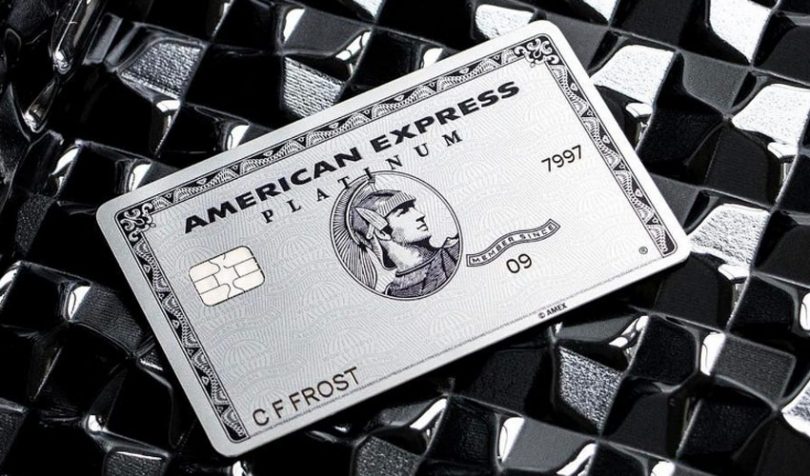In December at the Hyperledger Global Forum in Basel, American Express was the most significant non-tech company to share details about its blockchain applications. The cost of operating the rewards program is American Express’ single biggest expense at $8.7 billion in 2017. Given how important rewards are to the business, the company recently enhanced the program to make it more flexible. Hence the blockchain rewards project solves a real business need.
Today customers earn points based purely on the total transaction spend. The retailer might want to use rewards to target a brand or product, a particular day of the week, a customer profile or something else. But until now they haven’t been able to do that.
The appeal of rewards
And keeping the rewards program attractive is important. American Express has a premium brand with high-spending members who appreciate the rewards.
In 2017 American Express averaged $9,619 spend per card. And its basic proprietary cards have almost double the throughput at $18,519. Contrast that with Visa where cardholders spend $3,351 annually (Mastercard: $2,870), and after deducting cash withdrawals, the figure is just $2,443 (Source: Visa annual report).
As an integrated global payments company, American Express differs from Visa and Mastercard in that it operates as both the bank issuer and merchant acquirer, in addition to processing transactions. Visa and Mastercard don’t advance their own money, so instead their partner banks earn the interest.
But it hasn’t all been plain sailing. Earlier this year American Express exited its “coalition loyalty business” in the U.S. known as Plenti. The idea was to take rewards earned in one industry and spend it in another sector. So consumers could earn rewards on groceries and use them at Macy’s.
It was great for consumers, but according to PYMNTS.com, it wasn’t such a good deal for Macy’s and other retailers. Specifically, it didn’t drive traffic into the stores. So merchants started to pull out and the program closed. In some ways the blockchain solution is the opposite of Plenti.
Flexibility
“What the merchants want is the flexibility to reward or incentivize the right behaviors,” explained Michael Concannon, VP of Technology at American Express. “At this point [outside blockchain] they’re working only with the whole transaction level, and they’re not able to go to the level of incentivizing specific behaviors or targeting specific customers in their own channel. And that’s what this enables.”
The first partner for the blockchain solution was online wholesale retailer Boxed which unveiled a pilot in May. Today its website offers 5x or 10x American Express rewards points for selected products. Another example is Exxon where customers were offered 3x rewards points on premium gasoline.
Travel and entertainment is an important sector for American Express and in 2017 accounted for 23% of card spend in the U.S. Its cobrand card with Delta made up approximately 8% of billed business in the same period. Hence it’s no surprise that it already has a blockchain partner in travel. RocketMiles enables travelers to earn rewards on hotel bookings, and the customer selects their desired rewards program. The hotel site is part of the Priceline Group now called Booking Holdings and also owns Booking.com, OpenTable and Kayak.
Apart from these three examples, American Express has a pipeline of merchants that it’s in the process of onboarding.
“We’re launching shortly with a non-transaction based award of points where they’re awarding customers just for activity. And that’s a big differentiator from what we could do today with loyalty reward systems that are limited by the source of data being only the transactions”.
Beyond the flexibility, using a blockchain provides transparency, so both the merchant and American Express see the same data which is immutable.
How it works
American Express developed the blockchain solution entirely in-house using Hyperledger Fabric. The company is a member of Hyperledger which is part of the Linux Foundation.
The blockchain doesn’t record personal information like the card member name and card details. Instead American Express tokenizes that data. When a consumer makes a purchase, the blockchain stores the associated transaction details. That information could be a product SKU, a time of day or whatever the retailer chooses, and these details can be used as triggers for the smart contract.
“The smart contract creates and awards the points,” Concannon elaborated. “Then we act as an exchange that takes those points and puts them in the backend loyalty systems. So we’ll reverse that token lookup and find the card member’s account and then put those points in their account in our traditional loyalty system.” And the merchant is billed for the cost from the existing systems.
Hyperledger Fabric has a concept of channels which is similar to a mini blockchain. Every merchant has a separate channel so that merchants don’t see each other’s transactions. “Our attraction to Fabric, in general, was the fact that we could solve all our privacy concerns by creating an individual channel per merchant,” said Concannon.
Recent releases of Hyperledger Fabric involve additional privacy options including Zero-Knowledge Proofs which allows questions to be answered without revealing detailed information. For example, responding to a question about whether or not a transaction included a particular brand without disclosing all the transaction details. “That opens new privacy options for us. And that will hopefully enable us to expand the program to cross merchant type of integration.” But for now, the scale-up is using one channel per merchant.
Merchants working with brands
Ledger Insights previously speculated about the opportunity of “cross merchant integration” for brands. Unilever or Nestle could approach American Express and roll out a promotion across multiple retailers.
But Concannon pointed out that American Express’ focus is the retailer: “We have a relationship established with the merchant. This program is about allowing them to have new capabilities. So while we’re not working directly with any brands, we’ve empowered the merchants now to have that relationship.” He also clarified while there’s scope for interaction between brands and merchants using the platform, that’s not something that’s happening right now.
Launch plan
Concannon noted that working with outside partners (merchants) using a technology that’s emerging can be challenging. Some companies will be further along the blockchain learning curve than others. “I’d recommend coming up with the production launch plan,” he said.
One aspect of the American Express plan was to reduce the level of coding required by merchants. The card company provided code and a software development kit that enabled the merchant to run the software on the node and interact with it using a simple web services API.
Additionally, American Express provided multiple hosting options. More advanced merchants can host their own nodes. An alternative is “white glove” hosting where American Express hosts the node and the merchant uses the web services APIs. Plus there’s the in-between option of a cloud-hosted model where American Express can help the merchant get up to speed on a node that the merchant controls.
One of the company’s current strategies is to become essential in its customers’ digital lives through technology, and blockchain is one of those technologies.
The rewards initiative wasn’t its first blockchain project. A year ago American Express launched cross-border business payments with Santander UK using Ripple’s technology. “It’s going well,” commented Concannon. “It has the potential to expand to more banks and more currencies, and we’re looking into that. ”
There’s the impression that there might be quite a bit of competition for that energy. As with most large corporates, the company is keen not to reveal what it’s working on until the time is right. Concannon concluded: “We believe that this technology enables a lot of different use cases.”






